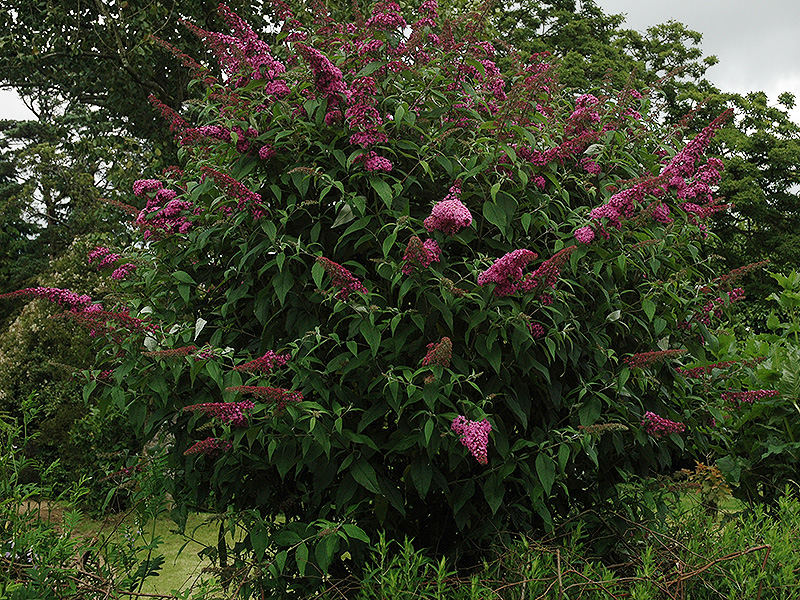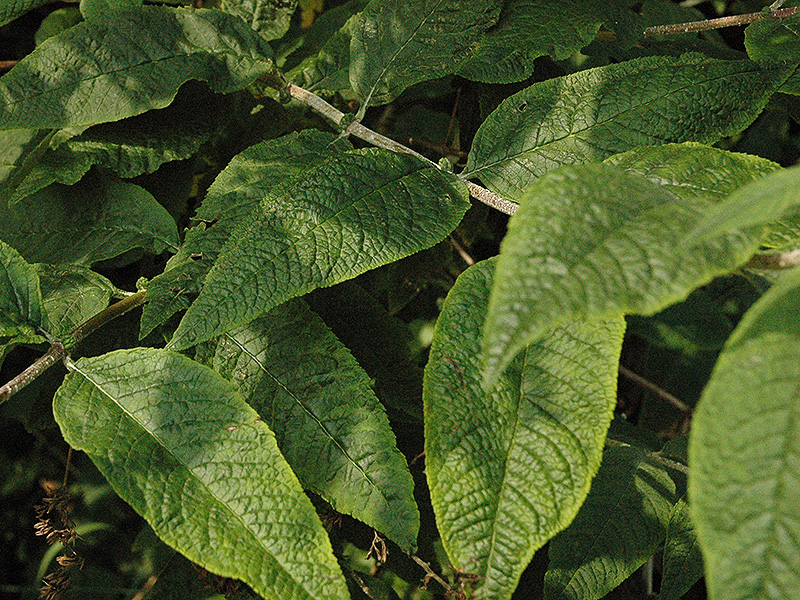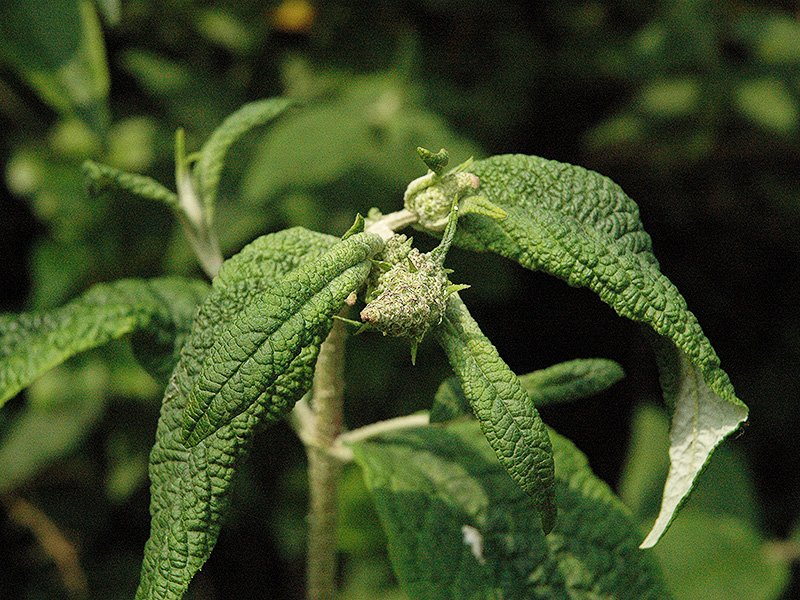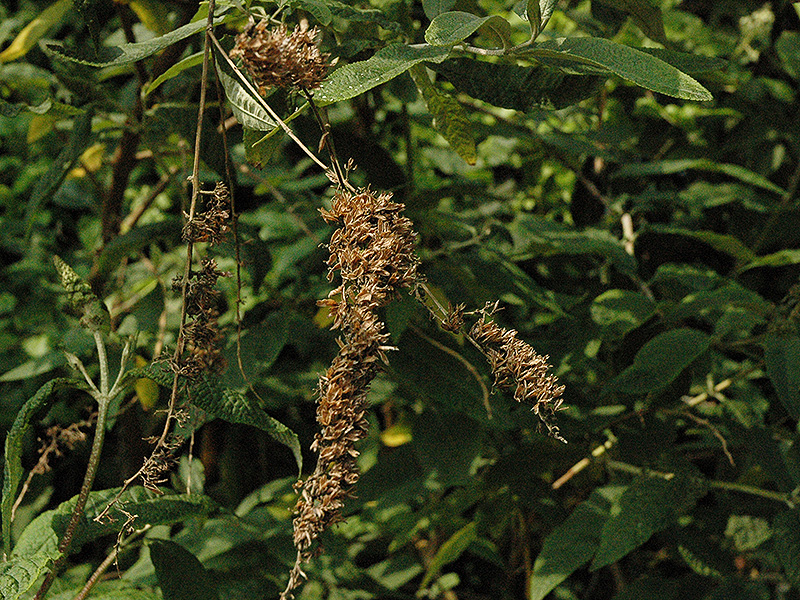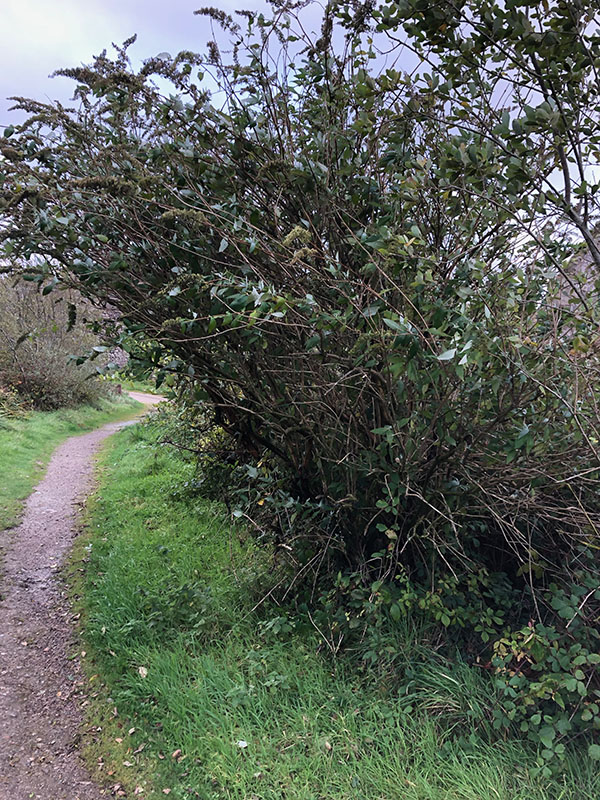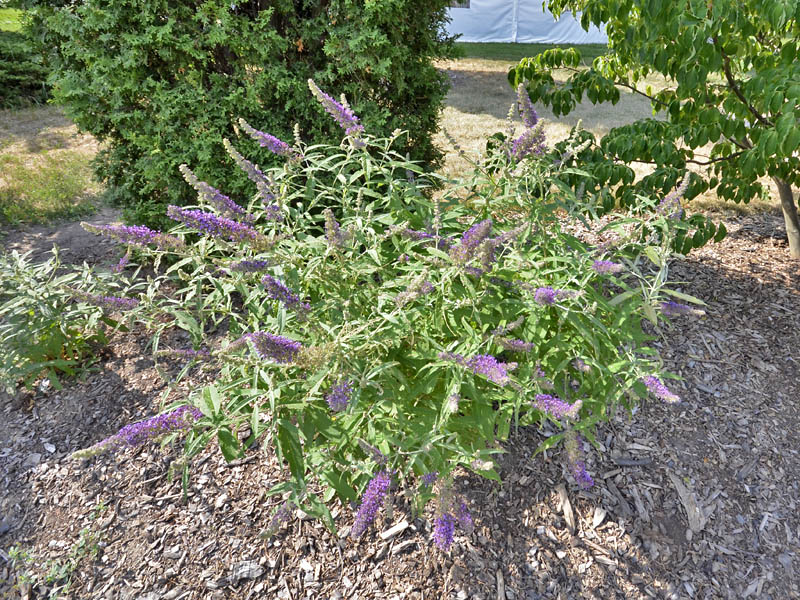Buddleja davidii (Butterfly Bush)
Michael's Opinion
The Buddleia davidii group includes many cultivars each with its own merits. As a species they prefer lean soils and positive drainage, and if happy they will self-seed. I frequently have many seedlings popping up in the gravel driveway each summer, and will leave the odd one to see what happens. In severe winters the plants may experience winter dieback where the plants may fail to re-sprout in the spring. They are perennial, but if treated as an annual you will not be disappointed if they fail over the winter. That said, I have not lost one in the garden for the past six years. This is considered a invasive plant in some areas, so use with caution where cold winters may leave them unchecked.
Botanical Information
| Family | Scrophulariaceae |
| Genus | Buddleja |
| Species | davidii |
| Synonyms | Buddleia |
| Category | Perennials, Woody |
| Type | Shrub (deciduous) |
| Origin | Buddleia davidii is native to central and western China and was first discovered by the French missionary and botanist Abbè Armand David in 1869, however it was not introduced into cultivation until 1904. Seed was sent to England by the famous plant collector E. H. Wilson to Veitch Nurseries. Since it is quite a hardy plant it was quick to establish, to the point that today it has become an invasive species. |
| Pronunciation |
Details
| USDA Hardiness Zone | 5 |
| USDA Hardiness Ref. | |
| Canadian Hardiness Zone | 4 - 6a |
| Canada Hardiness Ref. | |
| RHS Hardiness Zone | H7 |
| RHS Hardiness Ref. | |
| Temperature (°C) | -29 - (-23) |
| Temperature (°F) | -20 - (-10) |
| Height | 5 m |
| Spread | 5 m |
| Growth | Fast |
| Flowering Period | June, July, August, September |
Description and Growing Information
| General Description | A somewhat ungainly shrub that is very attractive in flower but not so when out of bloom. |
| ID Characteristic | Identified by their large panicles and the end of the branches. |
| Shape | Large unkempt shrub. |
| Landscape | Cottage gardens and drought resistant borders. |
| Propagation | Seed requires no pretreatment, cuttings collected from May to June root easily, winter hardwood cuttings can be rooted. I have noticed in my gravel drive that there are many seedlings each year that require execution. |
| Cultivation | Easy to grow on positive, well drained, lean soils. Should only be pruned after new growth emerges in the spring. |
| Pests | Occasionally aphids. |
| Notable Specimens | Great Flat Lode, Redruth, United Kingdom. |
| Habitat | Thickets on mountain slopes, limestone outcrops, forest clearing, and rocky stream banks. |
| Bark/Stem Description | Light beige, somewhat papery in texture, many stems usually not exceeding 10cm in diameter. |
| Flower/Leaf Bud Description | Naked, 2 scaled, greyish brown, pubescent. |
| Leaf Description | Opposite, simple, ovate-lanceolate 10-25m long, acuminate, closely serrate. |
| Flower Description | Perfect, usually lavender, 4 petaled, fragrant. |
| Colour Description | Grey green leaves appear in late spring and are retained until late autumn. |
| Texture Description | Medium. |
